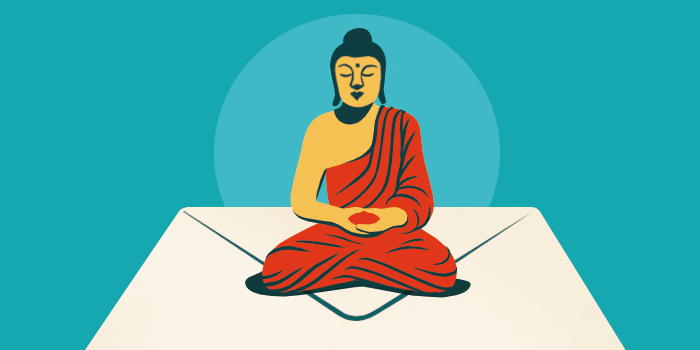Who was the Buddha?

A depiction of the historical Buddha Shakyamuni. | Photo by Mattia Faloretti
The historical Buddha was a prince named Siddhartha Gautama who lived some 2,600 years ago in what is today northern India and Nepal. He was born into a warrior clan known as the Shakya, which is why he is often called Shakyamuni, “Sage of the Shakyas.”
According to legend, shortly after Siddhartha’s birth, a wise man prophesied that the child would grow up to be either a powerful king or a great spiritual leader. His father, the king, did everything in his power to ensure that his son and heir would have no reason to pursue religious life, showering him with every privilege and luxury and sheltering him from the harsh realities of the world outside the palace.
At the age of 29, dissatisfied with palace life, the prince ventured beyond the palace walls on a journey that would change the course of his life. On the first trip, he saw a sick man; on the second, an old man; and on the third, a corpse. These were his first encounters with life’s inevitable suffering, and he was devastated. Then, on a fourth trip, Siddhartha saw a mendicant spiritual seeker and had a revelation: there might be a way out of suffering, and the possibility seemed to lie in the religious life.
Soon thereafter Siddhartha left the palace to seek the end of suffering. He studied with two renowned spiritual teachers and then embarked on a journey with five companions, meditating and taking up severe ascetic practices, such as prolonged fasting, that nearly killed him.
After six years, he had another realization: the way out of samsara—the cycle of birth, suffering, and death—lay neither in indulgence—his palace life—nor in extreme physical denial—his spiritual life thus far. There was a “middle way” to end suffering through training the mind. He resolved to meditate under a ficus tree (now known as the Bodhi tree), in a town called Bodhgaya, until he had discovered the answer to his quest.
While sitting under the tree, Siddhartha had a series of insights into the nature of reality and became enlightened. For the next 45 years, until his death, he was known as the Buddha (“the Awakened One”) and taught the path to liberation that he had realized.
Discover Deck 1:
How did the Buddha become enlightened? By giving up his path of asceticism and sitting in meditation under the Bodhi tree, the Buddha became enlightened to the middle way.
Was the Buddha a God? The Buddha said he was not a god to be worshiped; he’s an example of a human being who became awakened.
What is enlightenment? Can anyone become enlightened? Enlightened beings have escaped the cycle of existence known as samsara, and reached the end of suffering. The Buddha said that this path was open to anyone.
Who were the Buddha’s first disciples? Meet the five spiritual seekers who had been the Buddha’s earlier companions and abandoned the path of asceticism.
What was the Buddha’s world like during his teaching years? The Buddha lived in a time known as the Axial Age, a time of expanding empires and spiritual and philosophical flourishing.
Did the Buddha have past lives? Before he was a prince, the awakened one experienced life as a parrot, monkey, rabbit and other animals and humans.
What happened after the Buddha died? The Buddha’s death is referred to as parinirvana, meaning that he won’t be reborn again.
Are there other Buddhas? In addition to the historical Buddha, there are many buddhas (“awakened ones”).
Why are there so many different kinds of images of the Buddha? Buddhism spread to different cultures with their own artistic traditions.
What did the Buddha look like? No likenesses of the historical Buddha were made during his lifetime, but here’s what we can piece together.
Recommended reading:
- Leaving the Palace by Ann Tashi Slater
- How a Mother Would Tell the Buddha’s Birth Story by Anne Cushman
- In Defense of “Enlightenment” by Bhikkhu Bodhi
- A Short History of Buddhism by Sherab Chodzin Kohn
- Unanswered Questions in Buddhist Studies by Donald S. Lopez Jr.

Tricycle is more than a magazine
Gain access to the best in sprititual film, our growing collection of e-books, and monthly talks, plus our 25-year archive
Subscribe now